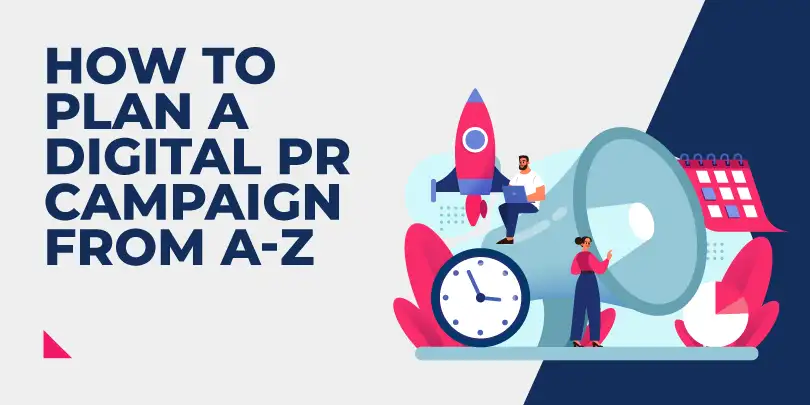

How to Plan a Digital PR Campaign from A-Z
Digital PR is an online marketing strategy used by brands and businesses looking to increase their online visibility. A digital PR agency will create unique content and research before reaching out to journalists, bloggers, and industry influencers by sending an online press release to them. Online PR aims to earn high-quality backlinks, and brand mentions and improve SEO performance.
To avoid sounding too technical, in layman's terms it is an online marketing strategy that helps companies enhance their online visibility.
Those who work in digital PR know a thing or two about the importance of going digital. And to those thinking about hiring a digital PR agency, you will be wondering what value it holds. Think of digital PR experts as the wizards of the SEO world - the two have merged out of an SEO's need to deliver visibility on Google.
If you're thinking about raising your Google game and looking to elevate your business authority, then you'll want to read on as this digital PR guide will truly capture the what and the how.
Step 1: Brainstorming a Digital PR Campaign
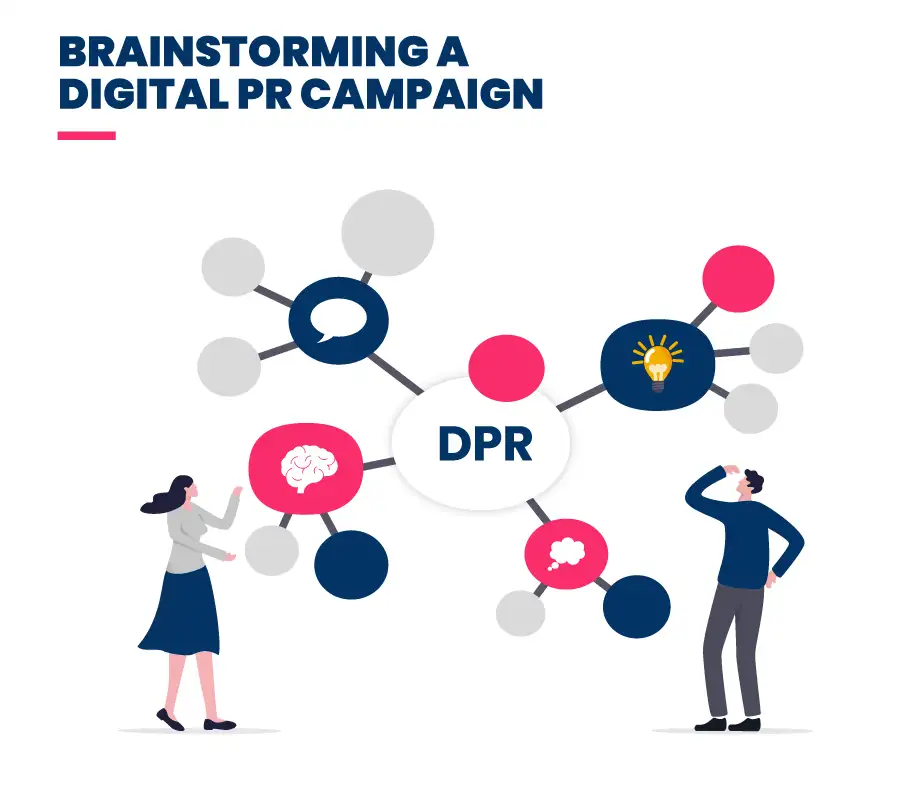
A successful idea is the beating heart of any digital PR campaign. It is supported by data, visuals and a gripping story. But without a truly "good" idea, your campaign will very quickly fall apart, and you'll often find yourself flogging away at a dead horse.
Digital PR brainstorming isn't one-size-fits-all, and good ideas don’t come from that 3 p.m. stump in the day. Some of the best ideas come to us when we least expect it.
To fuel those fresh ideas which can jumpstart your brainstorming session, consider some of the following questions:
1. What's happening in your industry - past, present, and future?
2. What does the reader want to know about?
3. What does the journalist want to write about?
4. Who would you like to target - is it the business professionals or the consumer?
5. Should you focus on data-rich campaigns that are relevant to your industry?
6. Is there a national/seasonal event that can support your idea?
The Power of a Digital PR Plan
Although you need a certain degree of spontaneity when brainstorming, there is also an element of preparation in advance that can form, expand, or support an idea you have with real data.
When coming up with PR ideas, always ask yourself:
1. Does the journalist care?
2. Will the reader be interested in what you’re providing?
3. Will your client like the idea/understand the premise?
4. Will it achieve those juicy, stand-out placements?
5. And finally, can you imagine it being placed?
If you can't, then ditch the idea!
Where Can You Source Data?
1.Governmental datasets such as GOV, and ONS - These often get covered quickly as journalists use them a lot, but you might be able to find a new angle on something.
2. Industry reports from leading private companies.
3. YouGov.
4. Freedom of Information Requests (FOI).
5. Create a survey campaign to distribute.
6. Google Trends.
7. Ahrefs/SEMrush for keyword volume.
8. Google Keyword Planner.
9. Social media analytics.
For more information, check out the best data sources to use for digital PR campaigns.
Google Commands
Considering there are millions upon millions of pages on Google, you'll be pleased to know multiple Google search operators allow you to search more fluidly, whilst limiting your search.
Here are some examples:
1. Finding reports/statistical releases: 'football statistics year', 'football statistics report year', as well as more specific search commands such as 'Premier League sponsorships statistics year'.
2. If you're looking for information on number plates, you may use the following: intitle: "Number Plate" inurl:news. This searches pages in Google which have "number plate" in the title and "news" in their URL.
3. "" - If you're looking for a specific phrase, put it in quotes, forcing Google to use an exact match.
4. Insite:websitename.com/.co.uk [TOPIC]. This tells Google to only pull articles found on the website related to this topic.
5. Intitle: tells Google to search only in the page titles for a word or phrase.
6. Related: shows results similar to that website. It could be good if you have found some niche-specific sites and want to find more like them.
7. Allintitle: returns results which have all of the words following the colon in the title.
Step 2: Choosing a Digital PR Campaign Type
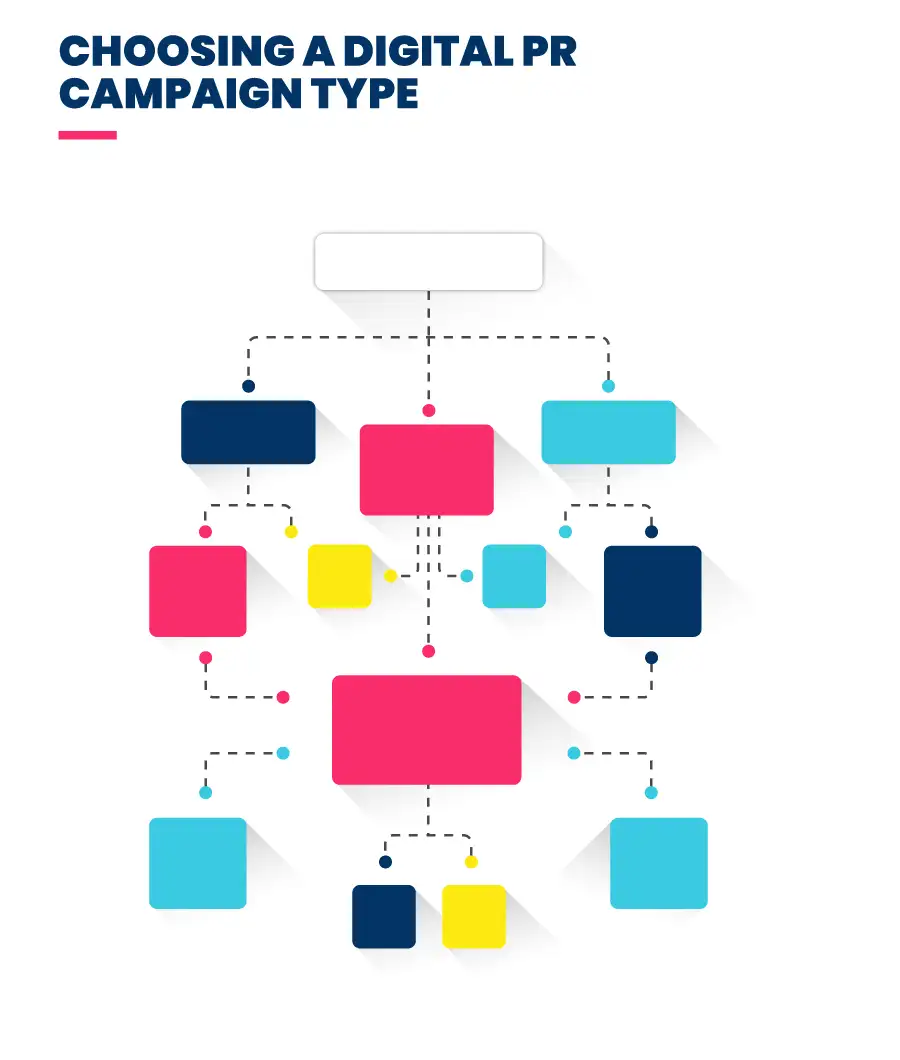
They're as juicy as freshly squeezed orange juice - striking, the perfect balance of sweet and sour, can cause a stir if not juiced properly, and we all love a cheeky glass now and again…
Tabloid Rich Stories
If you brainstorm a tabloid-rich story, you're likely to make an impact with a story that's compelling and fuelled by gossip; which consumers love to read. They can be "easy" placements - not necessarily links, but achieve powerful brand mentions, which can only add to your website's credibility.
Journalists will also crave this content time and time again, so if you deliver stories they love, they'll keep coming back for more.
Media Requests
When answering media requests, the result can be quick, relatively easy and low-risk PR links. It's one of the easiest ways of securing backlinks by utilising your brand's field of expertise to distribute newsworthy comments to journalists seeking information. Not to mention, journalists will often provide credit in the form of a link. What more can you ask for?
Data
Crunching numbers should be at the heart of campaign ideation. But it's no easy feat, and a data-driven digital PR campaign can be high risk, and not always time efficient. That being said, if you consider your idea to be the crème de la crème and you have confidence in the hook, then give it a shot! You’re more likely to benefit from more authoritative and relevant placements from high DA publications, which are often of a similar/relatable niche to your brand - increasing chances of improved rankings of keywords.
Reactive
Reactive PR will promote your brand image in a positive light, showcasing your expertise. But the clue is in the word - you need to be quick, thorough, and on the ball when building targeted links to inner pages through reactive campaigns. It can be the most rewarding campaign type as if done well, it could cause your story to go viral, gaining more links in less time. Less really can be more.
Viral Link Bait
There is no knowing if a digital PR campaign can go viral, but there are some fool-proof ways to increase your chances. You'll want to jump on core themes - such as product-based stories, and cheating scandals, and touch on subjects such as money, marriage, fake news etc. Again, it's high-risk, as it can be time-consuming, without knowing the real impact of success.
Step 3: Visualising a Digital PR Campaign
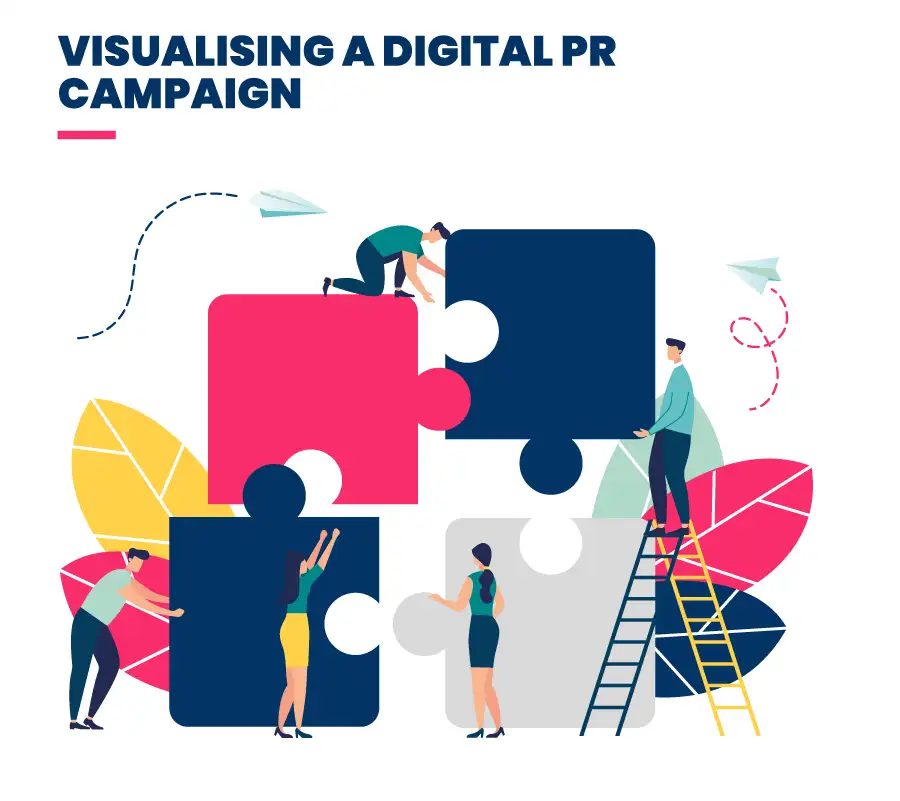
Using different types of visualisation to represent data is a key element of a Digital PR strategy, and you should consistently ponder your audience before embarking on a graphic. The type of visual will depend on your campaign type, which we’ve spoken about earlier.
A good, strong graphic should act as a stand-alone visual that encapsulates your data. A journalist and reader should understand the data without the context of the press release, taking complex data and transforming it into a far more digestible manner.
Finally, less is always more. Don’t include a visual if it’s not needed or doesn’t exemplify your findings. Don’t overcrowd your visual so it’s bursting with information, as you’ll lose interest from the receiver straight away.
Step 4: Preparing a Digital PR Campaign Package
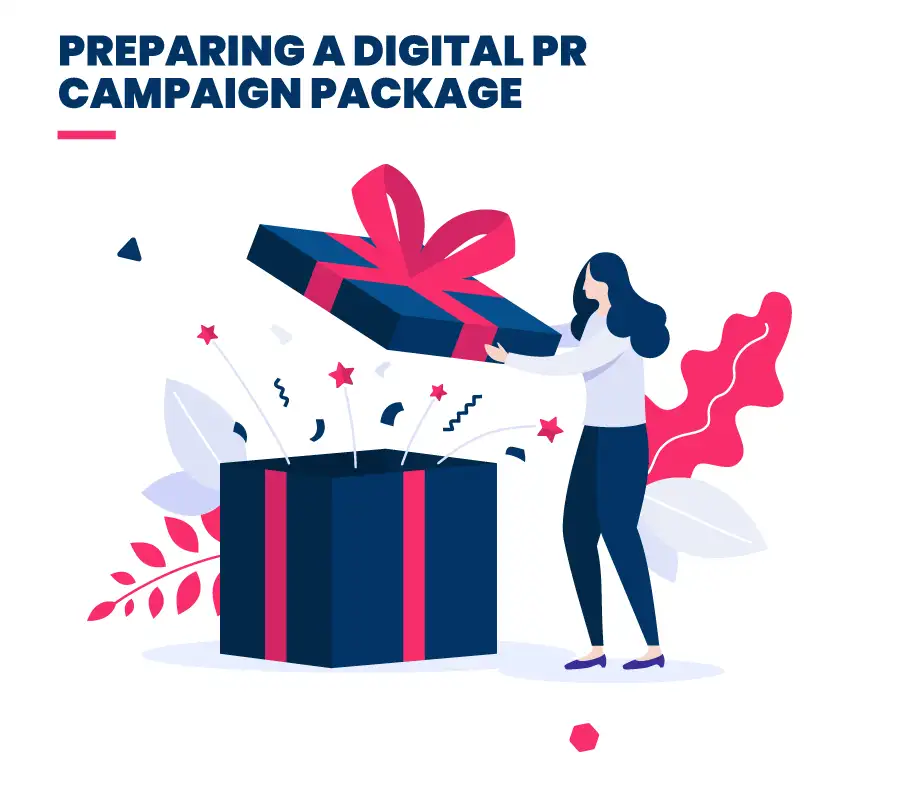
There are unquestionable ingredients when packaging up your digital PR campaign to maximise your chances of being published.
The Email
Also called a "pitch" to journalists. This is arguably more important than the PR as it will make or break whether a journalist looks at your email to begin with.
Your email needs to include a brief introduction. This can include a leading statistic, fact or referencing something that’s trending in the news. You’ll want to jump straight in, and not waffle on, so it’s crucial to introduce the topic, what’s been researched and how.
At this point this is where your USP should shine - if your hook isn’t established straight away, you’ll lose the journalist and there’s no going back.
What to Consider When Drafting a Subject Line:
1. Open with statistics, such as a percentage as it engages the journalist immediately and showcases a unique data stance.
2. Vary your subject lines according to the field you’re reaching to.
3. Play around with a combination of subject lines, until you reach your strongest.
4. Keep it short, sweet, and snappy.
5. Stuff your ‘keyword/s’ in the first 5 words if you can. If your subject line is too long, journalists may not see the last part.
6. Consider your audience/media outlet – perhaps take inspiration from how they write their headlines and send them something they can identify with.
For more inspiration, check out which subject lines perform best in digital PR.
Your Press Release
Much of the hard work is 'done'. You've compiled your data, analysed your results, visualised your data, and you're ready to move on to the next phase of your Digital PR plan. Your mission is to translate everything you have into a press release that will engage and lure journalists in. But remember, you’re not writing the finished article or feature, you're simply supplying the journalist with the steps for them to do so.
Press Release Dos:
- Summary of key points/findings towards the beginning of your release so journalists do not have to read the entire release.
- Subject introduction - establish a connection between your research and what's circulating in the media. Perhaps you're reacting to a piece of news, or there's a stand-out statistic that's fuelling your campaign subject matter.
- It shouldn't take long for the journalist to anticipate the source of the research - the 'who' (yourselves or your client) should be mentioned almost immediately, together with the 'why' and the 'how'.
- When detailing the 'why' and the 'how', you should include a clear methodology and links to data/resources that the journalist would need to support their article.
- Journalists don't have a lot of time when crafting their articles, so be as attentive as possible to provide case studies and expert comments to support your findings. One agency recently found that if you include an expert comment in your original release, you'll increase your chances of getting placements by 64%!
- Refrain from overloading your press release, consequently boring prospective journalists. Try and limit how much you write in a release to no more than two pages.
- Ensure you provide all visuals, core data, survey results and any additional resources the journalist may need.
Press Release Don'ts:
- Don't blabber on. Don't include too much 'waffle', and not the kind most people like. Journalists are busy, so get straight to the point.
- Don't be cliché in your approach and tone. Try and be as personalised as possible. You don't want to sound robotic and as if you're sticking to templates.
- Avoid large chunks of text where possible as the journalist will lose sight of the core argument.
- Lack of hook or key angle which a journalist can pick out straight away.
- Read your audience and your topic - you shouldn't include flattery, jokes, puns, or quirky language where inappropriate.
Step 5: Outreaching a Digital PR Campaign
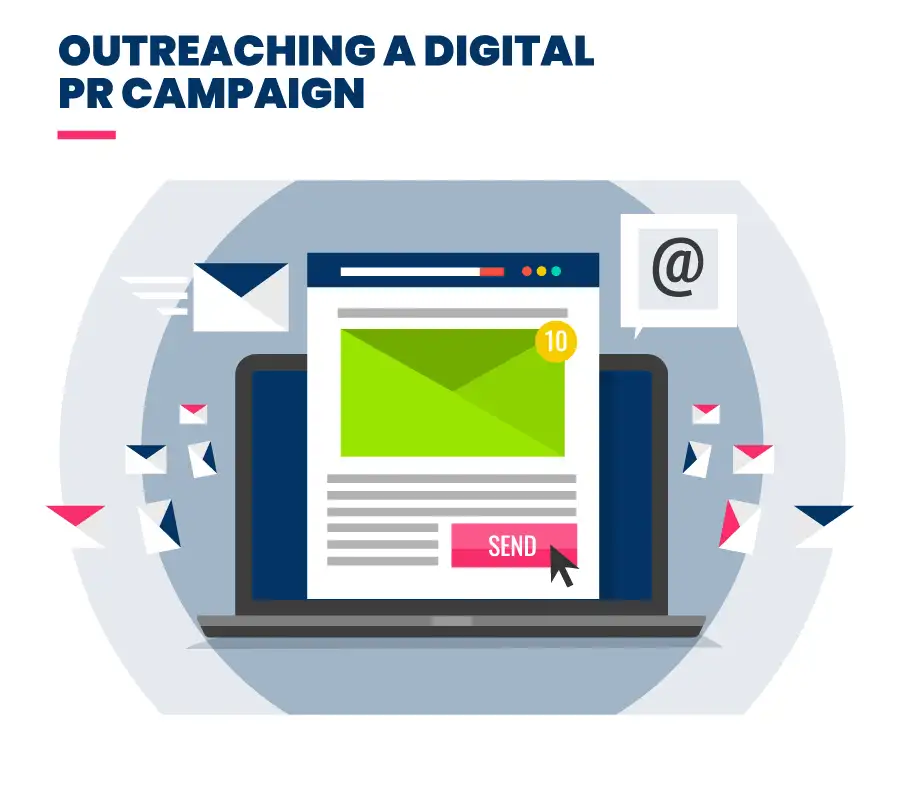
When you're at the point of outreaching your digital PR campaign, one of your first considerations should be interested sectors.
Take a moment to consider who would be intrigued by your research, as it could open up a positive can of worms for relevant sub-sectors to outreach to. In doing so, you'll be presented with several chances to write catered press releases, drafting personalised subject lines that echo the audience you're emailing.
Your campaign shouldn't limit your approach, it should push boundaries, in a bid to source more specific, and appropriate publications through a systematic approach to outreach.
Regionals
Regional newspapers crave content at almost the same rate as nationals, so targeting regional outlets can prove a worthy cause. When brainstorming ideas at the very beginning of the process, anticipate if your data lends itself to a regional hook. If so, it could be an easy way of securing placements, and syndicated ones too.
And although regional news outlets are prepared to take your content, don't assume they will add a backlink. It can be harder to achieve a link, but as per national sites, they have a high domain authority (DA) meaning citations could be as powerful as without a link.
International Outreach
The holy grail of digital PR strategy is backlinks, and you're not going to rake them in just sitting around and hoping journalists are interested in your release. You need to graft and graft hard, and one 'easy' way of securing high DA links is by going outside of your market/demographic.
Simplify your topic and think about how universally appealing it may be. If it is, there's even more scope for outreach to Europe and the rest of the world.
Even if your digital PR campaign has country-specific data, don't be fooled by its limits. The fact the data focuses on one country alone shouldn't deter you from sending it more widely. If you can pinpoint a subject that's likeable no matter the country of interest, then there's no reason international publications wouldn't publish your work - if anything, they can be the most interested, opening up your backlink potential. Find out more in our guide to international link building.
Step 6: Measuring the Success of a Digital PR Campaign
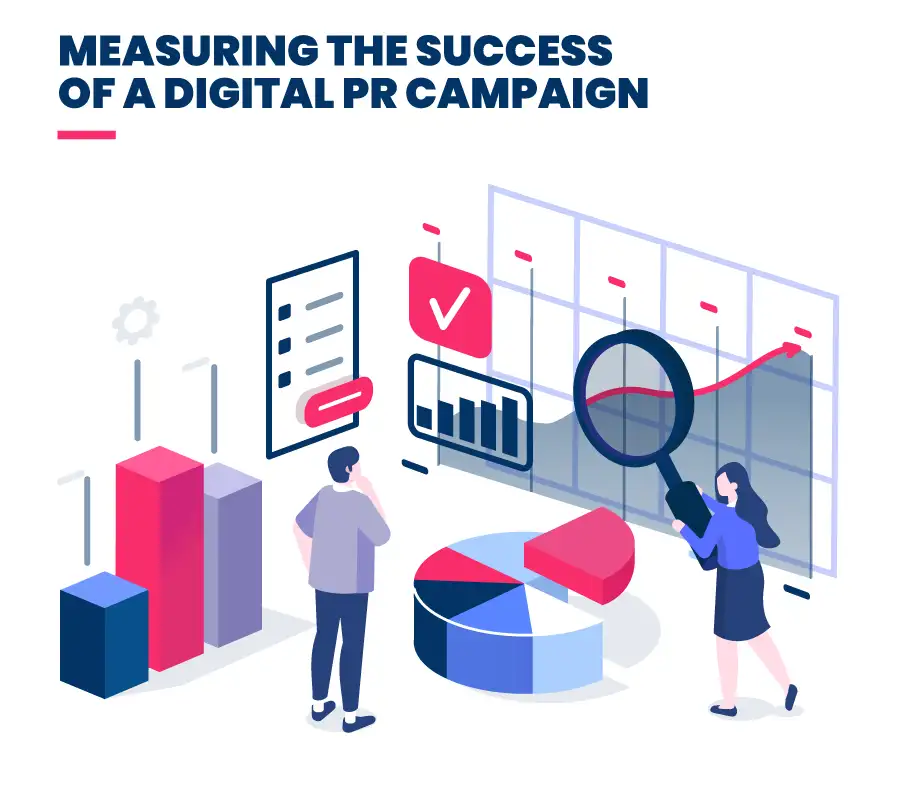
Digital PR is a far more measurable marketing approach in a digital landscape, unlike traditional PR, due to its offline emphasis. That being said, it can sometimes feel like you've hit a dead end, and stuck in the dark, unsure how best to monitor and measure the success of a PR campaign. But it doesn't have to feel all doom and gloom, as thanks to multiple analytics tools and Google data, it's become a lot more manageable to measure the success of a PR campaign.
Backlink Authority
Once a campaign launches, you'll be hoping and praying that your digital PR plan will pay off with an influx of high-quality backlinks. And whilst, it's somewhat natural to see a certain amount of low-quality, perhaps undesirable links filtering through, your primary focus is to warrant the most authoritative backlinks your site can benefit from. Using tools like Majestic SEO, Ahrefs, Moz Pro and BuzzSumo will enable you to view incoming links.
Domain Authority (DA)
This metric, supplied by Moz, predicts your probability of ranking in the SERPs. The more influential and relevant the backlink, the better your DA will be. You should take notice of the DA of a site, as well as the trust flow and citation flow (supplied by Majestic).
Social Shares
Don't dismiss the power social media holds in an age of modern technology. Social shares can elevate your brand reputation, not to mention reveal an insight into the way you cultivate your Digital PR strategy.
Your end goal is to see and hear your campaign spoken about. Whether it be through tweets, Facebook comments, LinkedIn posts or likes; no matter the platform, the more positive reinforcements your content has, the more likely it is your brand will come out on top.
Social media is also a platform to engage and be engaged, so you must direct as much traffic back to your site through shareable and referrable content.
Frequently Asked Questions (FAQ)
How long does a Digital PR campaign run?
Digital marketing agencies will provide a timeline of work, as some campaigns can be pre-authorised core campaigns, lasting several weeks or months especially if building a large-scale asset. Some campaigns may only last a couple of hours, depending on the campaign type.
It must also be noted that there's no definitive end date to a campaign once it's been outreached and collecting placements. If you're looking for an agency that goes above and beyond, you'll want to see intuition when a news story of relevance circulates and they're quick at being reactive. Likewise, you don't want a company to stand still - every digital PR campaign should be squeezed dry of potential.
How many links should I expect to see from a digital PR campaign?
How long is a piece of string? Ultimately, the decision for setting a links KPI is entirely your choice. If you are looking to hire an online PR agency to conduct monthly, or even quarterly campaigns, then you will set a suitable KPI. Once this KPI is set, a campaign will be expected to meet at a minimum the set KPI, but ultimately, the goal is to gain as many placements as possible.
What is the main SEO benefit of a digital PR campaign?
The main SEO benefit of a digital PR campaign is gaining high-quality backlinks. When reputable websites and influencers mention or link to your content as part of your digital PR plan, it boosts your brand or client’s credibility and improves the website’s search engine ranking.
These backlinks signal to search engines that your content is valuable and relevant, ultimately leading to increased organic visibility and traffic, which is essential for SEO success.